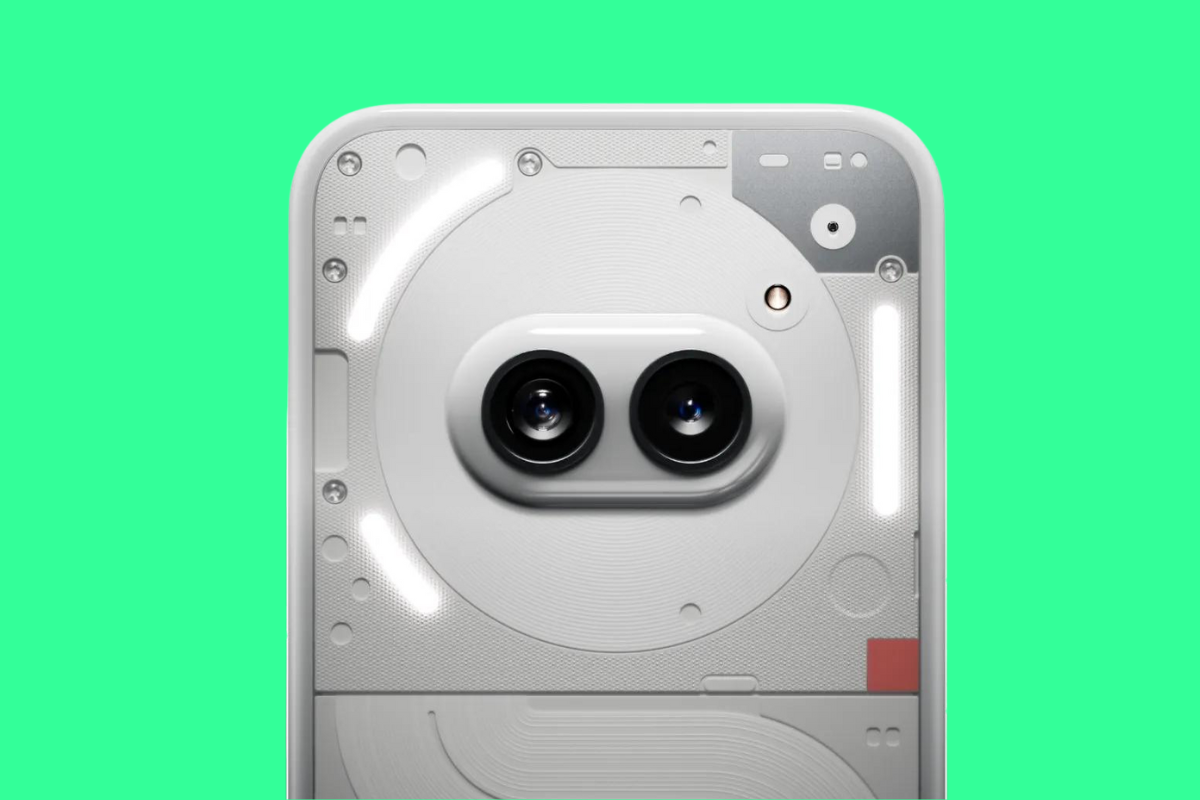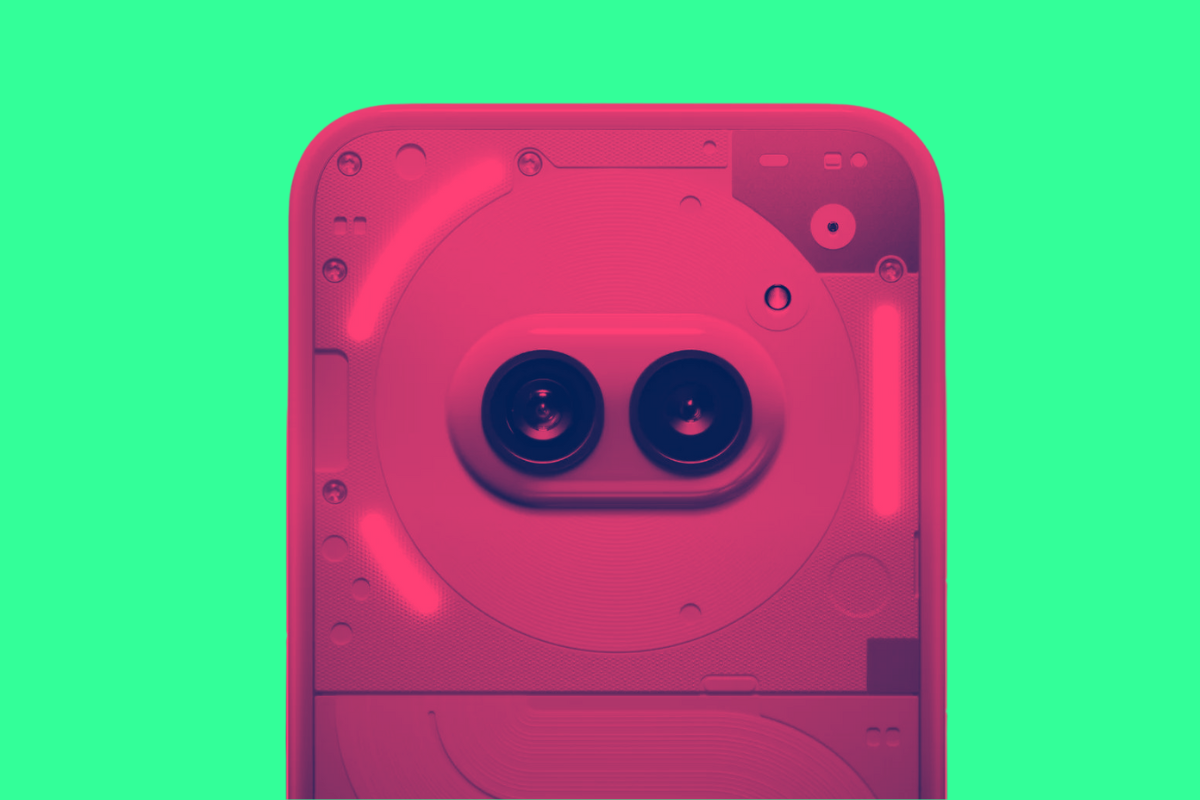The Nothing Phone (2a) is a brilliant little device, bringing some much needed flair to the budget-end of the market. Is it perfect? No. But it is arguably the best in its class right now
Budget phones are usually dull as dishwater. Uninspired designs, wonky performance and poorly optimized and/or implemented software. You’ll pay less for one but there’s plenty of downside to running cheap phones.
The Nothing Phone (2a) aims to address this by bringing some much-needed flair to the budget segment of the phone market. Designed with an Apple-like focus on aesthetics, the phone itself – on paper, and in person – is a sight to behold.
The difference between it and other sub-$300 Android phones is night and day. Look at anything from Motorola, Samsung, Xiaomi, and Nokia in this price bracket and it is plain to see. The Nothings Phone (2a) looks like a flagship by comparison. And this is a good thing, it’s the kind of thing you want.
What I Like About The Nothing Phone 2a

The design and look of the phone is obviously its main appeal. Read any of Nothing’s content and you’ll see that it is rife with Apple-like levels of pretension about design and aesthetics. Care and attention to detail have been the focus of the brand since its inception.
No other brand in the market spends this much time on a phone that costs less than $300. Most use a pump and dump strategy, whereby hardware is just rehashed and tweaked and repackaged. Rinse and repeat. No one cares if their $200 phone sucks, right?
If you want thoughtful, unique design, a solid software experience, and a decent camera, you’ll have to cough up for a more expensive phone – move up a price bracket or two.
Not with the Nothing Phone 2a. No, this phone delivers the kind of stuff you’d normally expect from a $500 to $600 phone. Great design? Check. Useful, beautifully executed software? Check. Decent performance and camera capabilities? Check, and Check.
To me, it feels kind of like what Google did with the original Pixel 3a. Take all the core, essential elements required for a solid smartphone experience, strip out all the superfluous stuff, and make the price so accessible it make the damn thing impossible NOT to recommend.
Hang On, What About Its MediaTek Processor?
MediaTek is NOT known for its high-end chipsets and this was one area I was initially concerned about when the phone launched. But like every aspect of this phone, Nothing has gone out of its way to ensure the chip its phone runs is optimized to the hilt.
The phone runs a specially developed MediaTek Dimensity 7200 Pro alongside 8GB of RAM / 12GB of RAM. Now, I’ve tested my fair share of budget smartphones and nearly all of them had issues with stuttering and lag.
But the Nothing Phone (2a) apparently doesn’t have this problem, and this is almost certainly down to the fact that the chip has been specially optimized for the phone itself, whereas most budget phones are just thrown together to make a fast buck.
Here’s WIRED’s take on the Nothing Phone (2a)’s performance:
Most impressive is performance. I have hardly noticed a single stutter while operating this phone. That’s while juggling multiple apps, and even while playing games like Pako Forever and Alto’s Odyssey. The MediaTek Dimensity 7200 Pro chipset inside is a powerhouse. In my benchmark tests, it matched similarly to last year’s Samsung Galaxy A54 5G. However, I dealt with multiple stutters on that phone, and none on the Nothing.
I haven’t tested this phone yet, so I’m not willing to bet the house on what other reviewers are saying – shillers gonna shill. But the general consensus seems to be that the Nothing Phone 2a’s MediaTek Dimensity 7200 Pro chipset isn’t just adequate, but is actually pretty damn good.
The Dimensity 7200 Pro, built on TSMC’s advanced 4nm process, outperforms the Snapdragon 7s Gen 2 and 782G in overall and GPU performance, according to AnTuTu benchmarks. The GPU tests show stable, high performance with gaming.
The Snapdragon 782G has slightly better single-core performance and thermal management, but the Dimensity 7200 Pro is no slouch there either, maintaining consistent performance with no significant drops.
So, yeah, if you were worried about performance on the Nothing Phone (2a), I don’t think you’ll have anything to worry about. You’re not going to get flagship-grade performance, but for a midrange phone it is punching well outside its weight.
Are There Any Downsides To The Nothing Phone 2a?
If you’re thinking of picking up this phone there is one major caveat that you need to be aware of and it relates to 5G connectivity on specific US carriers. You’ll get 4G, reports confirm, but not 5G and this will likely be a sizable issue for some users.
The Nothing Phone (2a) won’t run 5G on Verizon’s network, for example, and performance is reportedly patchy on AT&T as well. T-Mobile is said to be the best for performance and that, of course, includes MVNO networks like Ultra Mobile and Mint Mobile too (both run on T-Mobile).
You’ll Get Three Major Android Updates
You’ll get three major Android updates with the Nothing Phone (2a) and four years’ worth of security updates. This is fine, matching the industry average and beating brands like Xiaomi, Nokia, and ASUS.
Being a stickler for support, I’d love to have seen Nothing match Google and Samsung with 7 years of Android updates, but at this price point that’s never going to happen.
Even four years would have given the phone a distinct edge over literally everything else in this price bracket. Maybe next year.
Final Thoughts
Should you buy the Nothing Phone (2a)? If you’re on a budget or don’t want to spend a lot of money on a phone, but want something that not only looks good but also performs, I think it is basically impossible to beat the Nothing Phone (2a) right now, at this price point.
Nothing from Samsung, Xiaomi, Motorola, Nokia or any other Android brand comes even remotely close to the quality and attention to detail present on this phone. For the money, this is the budget Android phone to beat right now. Consider the stakes officially raised.
Me, I’d still be inclined to spend a little more and go with the Pixel 7a over this phone – or wait for the Pixel 8a in May/June. Part of the reason is that Google’s Tensor G3 chipset is a lot more capable, both in terms of things like AI smarts and image processing, as well as general performance.
The other reason is Android updates. Pixel phones get Android updates as soon as they’re released, not months or a year later (hello, Motorola). Pixel A-series phones only get three major Android OS updates, but get five years of security support – one more than the Nothing Phone 2a.
And then there’s the camera on the Pixel 7a (and the incoming 8a), it is just a cut above and not something the Nothing Phone (2a) can really match. But if you’re not too concerned with this type of thing, and a good camera is good enough, there’s no reason not to opt for the Nothing Phone (2a).
Just make sure you get it on the right carrier, otherwise you’ll be in a world of problems trying to get it to run 5G.


